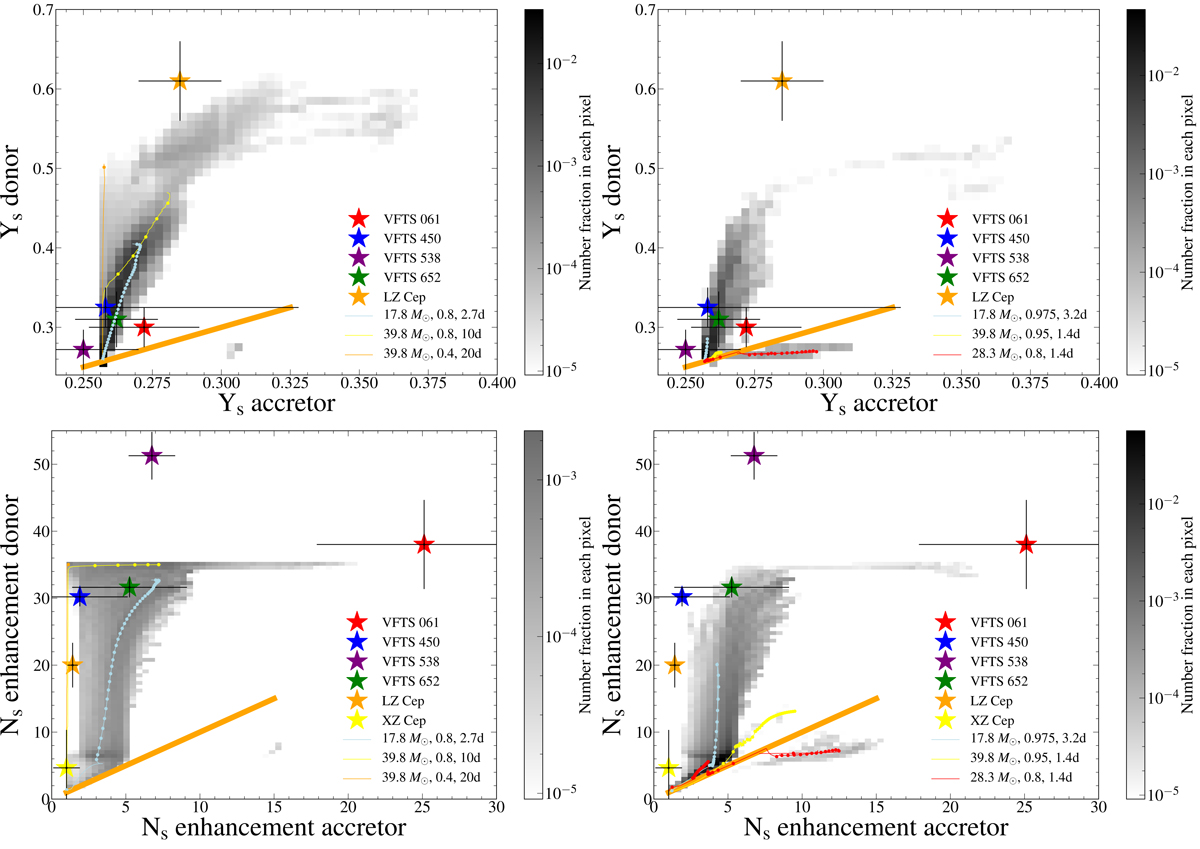Fig. B.1.

Download original image
Probability distribution of the surface helium mass fraction (top panels) and surface nitrogen mass fraction enhancement (bottom panels) of donor vs the accretor that is predicted to be observed in the semi-detached configuration of the Case A mass transfer phase. The left panels show the contribution to Fig. 7 from models that survive the Case A mass transfer phase while the right panels show the contribution to Fig. 7 from models that eventually merge during the slow Case A phase. The different coloured ‘stars’ with error bars denote the position of the semi-detached systems of the TMBM survey (Mahy et al. 2020b) and Galaxy. The thick orange line indicates where the surface helium mass fraction or surface nitrogen enrichment of the donor and accretor is the same. The thin coloured lines show the evolution of surface abundances during the main sequence with initial parameters (donor mass, mass ratio, period) as given in the legend. The corresponding coloured dots are at 50 000 years during the semi-detached phase. The grey-scale gives the probability fraction in each pixel. The total probability is normalised such that the integrated sum over the entire area is 1.
Current usage metrics show cumulative count of Article Views (full-text article views including HTML views, PDF and ePub downloads, according to the available data) and Abstracts Views on Vision4Press platform.
Data correspond to usage on the plateform after 2015. The current usage metrics is available 48-96 hours after online publication and is updated daily on week days.
Initial download of the metrics may take a while.


